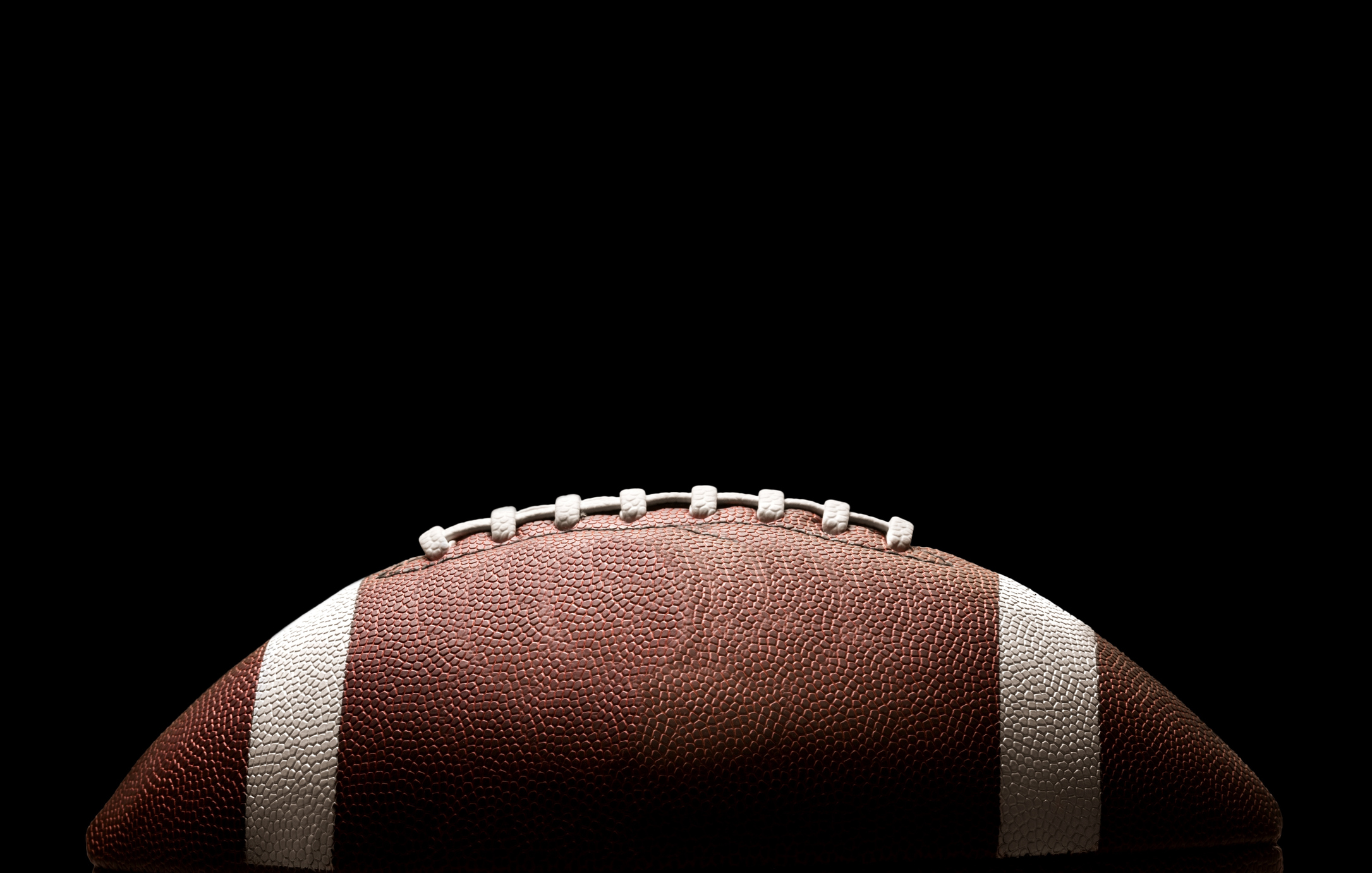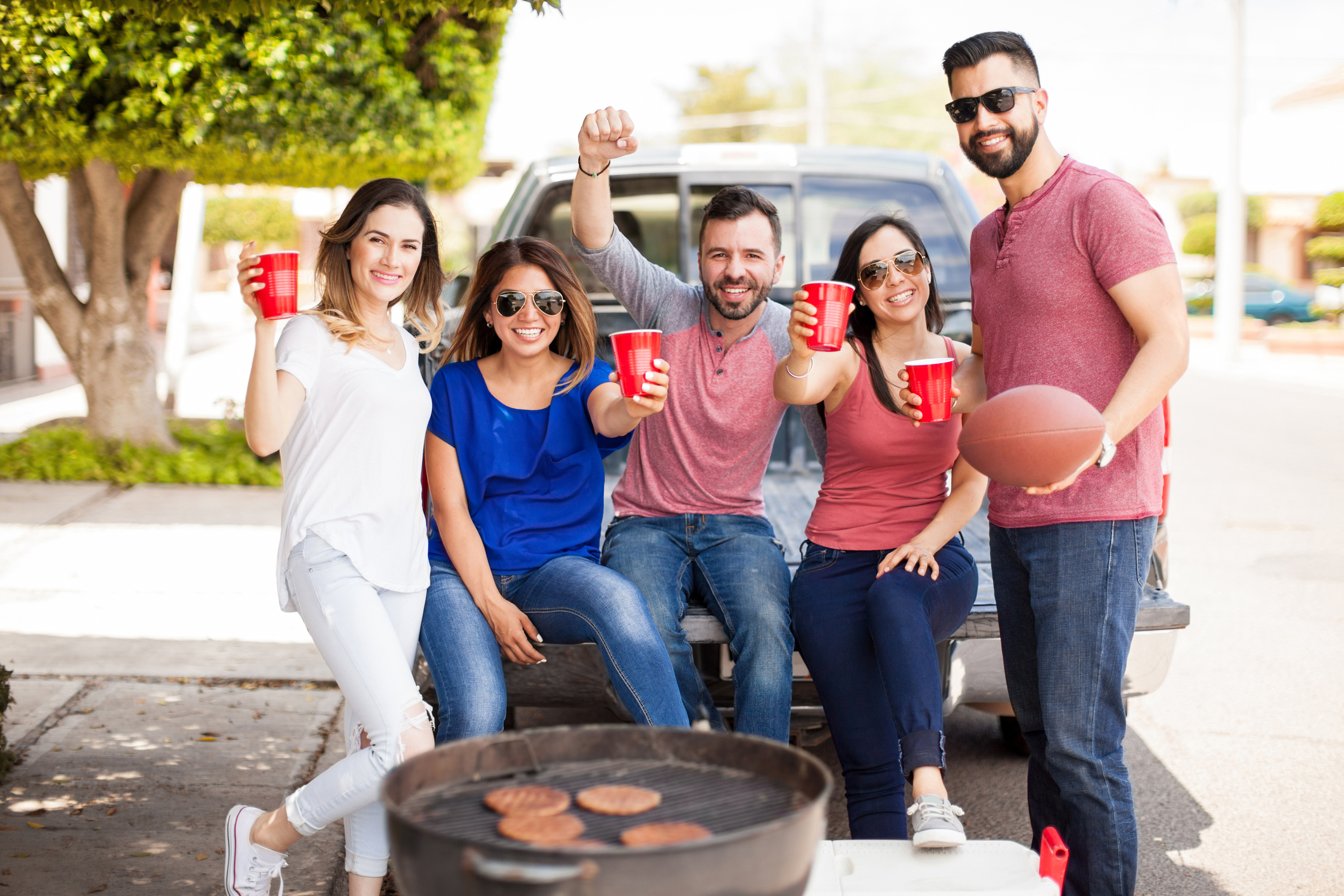The sport of baseball is said to be “as American as apple pie,” but tell that to the millions of fans of American football and you’re likely to get this response: “We beg to differ.” Actually, it would probably sound more like “are you [expletive] joking me?” The National Football League (NFL) will be holding its annual championship game on the 4th of February in the ice-cold state of Minnesota. Don’t worry, fans will be under a covered stadium and the festivities will be hot enough to overcome the region’s reputation for very cold winters no matter where the celebrations take place – and there will be many. This is the day that fans take to the streets, bars, parking lots and living rooms to be a part of an annual event that is like no other.
Fans around the world love their sports, so what makes this one so unique? Take all the emotions known to humankind and then squeeze them into a few hours each year. If you were to save and bottle the results and come up with a product, you’d call it Passion: made from concentrate.
Fun fact: A surge in TV sales in January and February has long been attributed to the NFL championship game, but the truth has more to do with retailers getting new inventory in March and looking to clear out old inventory by offering discount. A surge in TVs returned after the big game has been known to happen, but many retailers have wised up and adjusted their policies.
Fandom in sports is everywhere. From parades of triumph to public displays of disappointment and rage, fans personify the beating heart that keeps any sport alive. American football’s appeal is mainly due to the intense nature of each game. The entire season is only 16 games and each team plays only once per week, probably due to the punishment the players’ bodies endure during each contest. The game action is surprisingly short compared to the time allotted for calculating, strategizing and analyzing – and commercials. But each play is full of consequences and each loss during the season brings a team closer to having its hopes for a post-season appearance evaporate, along with a chance at the elusive championship. The stakes are that high. For fans, the game is as intense as any sporting event can get, and they wouldn’t have it any other way.
Stakes to steaks
Even though the actual game is short compared to all that happens before it’s actually played, the celebrations and comradery are really what American football is all about. No matter the weather, fans love to gather in parking lots and open spaces before a game and hold food and drink parties in what’s known as tailgating. There’s some debate as to its origin, from as far back as the 1890s when people ate and drank near the “tail end” of their horses, to the more accepted explanation of the tailgate party having started in the early 1900s when the tailgates of pickup trucks were used as seats and dining surfaces for fans to unite and share food and drink before a game. Regardless of when the partying started, the pre-game tradition continues. What you’ll see can vary from simple picnics with snacks and beer coolers to elaborate setups of TVs on generators and exquisitely grilled meats and other fare to rival the best restaurants. Pizza and beer are considered the official foods of the day for many fans and U.S. sales trends give marketers a feast of their own to exploit.
If you’re familiar with New Zealand’s campervan culture, this is it on steroids. Fans gather, share their team’s passion, taunt rivals, befriend others and then somehow manage to save enough energy to finish off their vocal chords cheering for their team in the hours that follow.
A Global Perspective
Despite being all-American, the NFL’s marquee championship game is viewed all over the world. That’s because, aside from the winter-takes-all stakes of the game itself, there are enough things about the event to keep all kinds of viewers intrigued. Rugby fans might see similarities in the layout and roughness of the game. The animated fans can match the fervor of global football (soccer) fans and the Canadians, who have their own league, might draw comparisons to their version of the game — only they would boast that theirs features a slightly larger field and maintains the tradition of awarding a storied cup for a championship. The Grey Cup, awarded every November to the Canadian Football League champion is over 100 years old. Even older is the famous Stanley Cup, awarded to the ice hockey champions of the National Hockey League each year. As famous American author Henry James once said: “It takes an endless amount of history to make even a little tradition.”
Tradition is strong in sports so it’s no surprise that the NFL is looking to start new ones. The league has been taking its game to the United Kingdom for a decade, featuring key matchups between American teams as part of the regular season schedule. Success has resulted in speculation that the league might actually consider adding a team in London. That would make for quite the road trip but with one game a week, it’s not far-fetched. Where there’s money to be made, anything is possible.
The “big game” of the American football championship is also the stage for the famous half-time show. This spectacle is now corporate sponsored and as elaborate as any large-venue concert. You want intense? The stage, lights, music and performers all have to be on and off in just 30 minutes before the game must resume. That’s twice the usual half-time period of 15 minutes. What used to just be a show featuring marching bands and local performers decades ago has evolved into a hyper-elaborate production showcasing world-famous pop, rock and roll, country and hip-hop artists. This is another reason millions tune in, especially those who aren’t necessarily fans of one of the two teams – or the game itself – but are definitely fans of the performers.
Another big attraction of the game has nothing to do with the half-time show or the plays on the field, but the plays for your dollars. Commercials take up the majority of the telecast and, with the biggest audience of the year hovering over television sets everywhere, sponsors pay top dollar to air ads that millions are sure to talk about days and even weeks after. This is where companies rise or flop in the most public way possible, as every viewer becomes a television critic this one time a year. It’s go big or go home time for many sponsors. Even newscasts feature segments on the best and worst commercials aired during the championship.
Fun fact: An average televised American football game lasts 3 hours and 12 minutes but the ball is actually in play for just 11 minutes. The clock can continue to run while players set up and huddle for the next play. Where does the rest of the time go? There are more than 100 commercials in a typical telecast.
The Venue
Most American football championship games have been held in cities with warm climates and little chance of bad weather. Of the 51 championship “bowl” games (this will be the 52nd), only 5 have been played in northern cities and all but one of those were held in a domed or covered stadium. A total of 27 championship games have been held in just 3 cities – Los Angeles (10), New Orleans (10) and Miami (7). For the 52nd iteration, Minneapolis, Minnesota will be the venue. The city has hosted before, but not in the year-old U.S. Bank Stadium, which features a retractable roof. Minneapolis winters are notoriously cold but the area offers visitors many things to see and do year round.
If it’s the game you’re after, you probably need deep pockets to attend. It’s highly unlikely tickets are still available, but if they are it’s going to be even more expensive than it was when we first drafted this article several weeks ago. For example, a Platinum Package that includes added in-stadium benefits such as field-level seats, a pre-game party, exclusive club access and the ability to go on the field after the game, starts at almost $14,000 USD and that’s not even the most expensive package. But groups can benefit. You and 59 of your closest friends can get a suite (or is that sweet?) deal for a starting price of $250,000 USD.
And then there are the sponsorships. We’re not just talking about the famous television ads that sell for millions of dollars and are as much a part of the event as the game itself; we’re talking about multi-million-dollar official sponsors of certain parts of the game, including the famous show at the game’s half-time break. There are also official merchandise items, beverage companies, automobiles, banks and just about any business willing to part with huge amounts of cash in order to be associated with the big game.
If you happen to find yourself in the Twin Cities (Saint Paul being the eastern half of the metropolitan area), you’ll be visiting a region that is consistently ranked one of the most affordable, livable, and healthy metropolitan areas in the country. That should warm a winter heart even if those bike trails, parks and lakes are covered in a snowy blanket this time of year. As far as the big game goes, there are many football-related activities sponsored by the league taking place around the metropolitan area. In addition, Meet Minneapolis, a regional marketing effort and hospitality partnership group, lists 52 places to see in honor of the 52 weeks leading up to the championship game – good information if you plan on visiting at other times during the year too. Minnesota is known for its lakes, outdoor lifestyle and a unique demeanor among Minnesotans that has come to be known as “Minnesota Nice.”
For fans of basketball and ice hockey, two Minnesota teams play in Minneapolis and St. Paul and will host games in the days leading up to football’s grand finale. The basketball Timberwolves will have games on January 27th and February 1st and 3rd. The Minnesota Wild of the National Hockey league will have a game versus the newly-minted and surprisingly successful Vegas Golden Knights on February 2nd. Regardless of what sport you take in, being in a city with so much activity is guaranteed to be exciting.
As far as football goes, the amount of money that the championship stand to generate is staggering. It’s probably why the NFL guards its trademark fervently – so much so that even we can’t mention the name of the event without running the risk of copyright infringement. We’re wondering if you’ve noticed. If you’re not a journalist or news organisation just “reporting” on the event, the NFL presumes you’re promoting it, or worse, piggybacking on the trademark to push your own interests. So there you have it! American football’s championship game is that big. But, it’s the host city’s show as much as it is the league’s, and with an opportunity to shine on the world stage, no expense is spared. In the end it’s just a game, right? We beg to differ.
Travel During This Main Event
Like Christmas and Thanksgiving, travelling by plane and securing lodging during this event can be difficult and a bit more expensive. If you haven’t already booked your accommodations, there’s still hope.
A couple quick trip tips here might be:
- Snagging a less than desirable flight time. Catching the red-eye, or patiently enduring longer layovers, may land you a slightly more affordable flight. Albeit at the cost of some sleep and comfort. But, hey, who needs that when you’re attending the year’s greatest football event?
- Hotels are likely filled. But, thanks to renegade hospitality players like AirBNB you may very likely be able to stay in a nicer, more comfortable locale. Landlords, Vacationers and BnB’s are often looking to pick up people left in the cold, as it were. Looking outside of downtown metro areas and innercities is likely to land you a place to crash and may save you money too.
You’ve probably thought outside the box to score tickets or at least a good venue to catch the game. The same will be required to find a good, affordable place to stay, even if you won’t get much sleep that first night.
Links:




